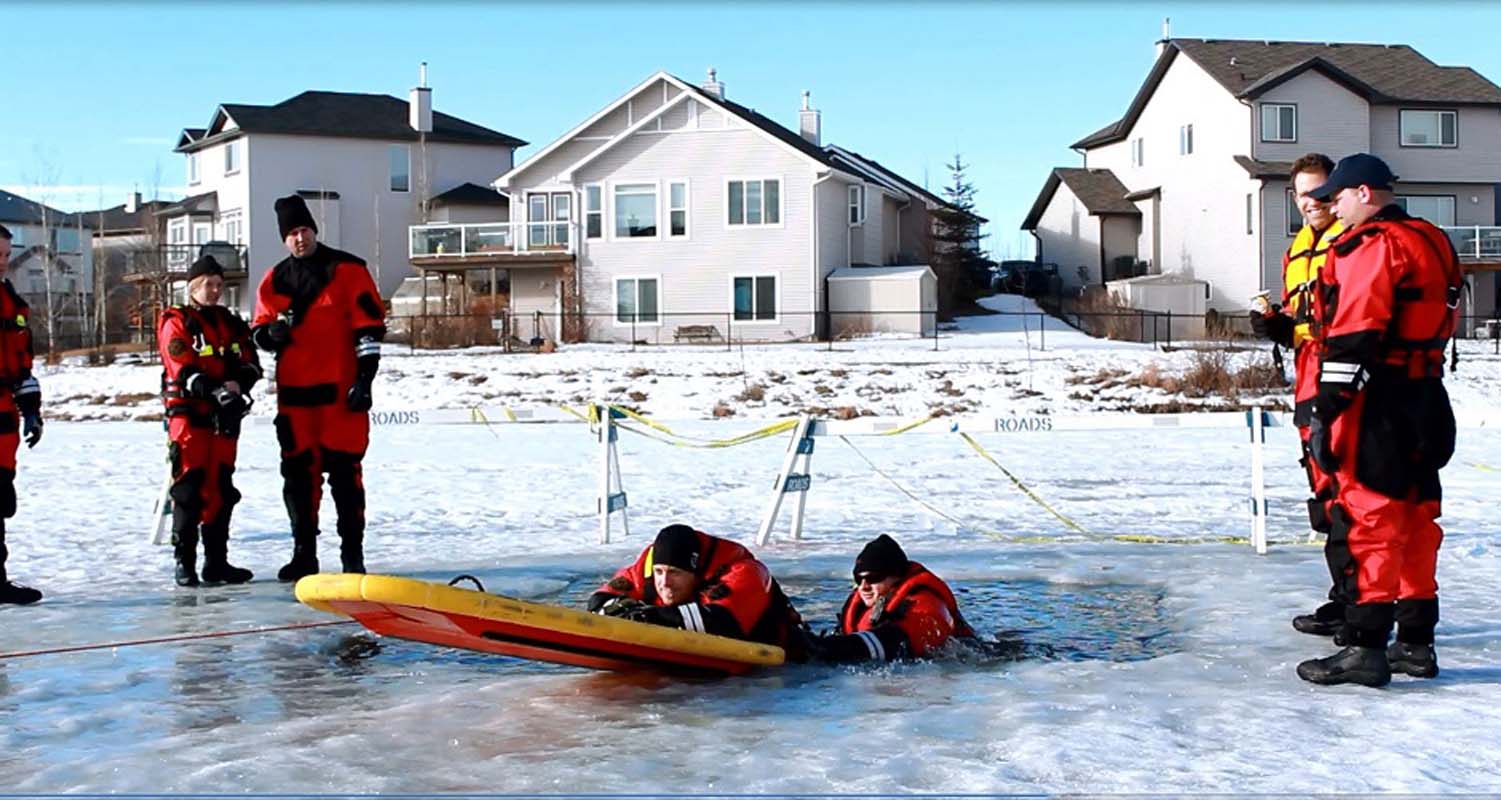
Now that the lake and other bodies of water have frozen, Chestermere Fire Services (CFS) have been out doing live training for ice rescue operations.
“The main reason is to keep, not only the public safe, but to also keep ourselves safe when we’re doing rescues,” said Senior Firefighter Robert Barchard with Chestermere Fire Services.
Barchard, who has been with CFS for six of years, is one of the trainers for the ice rescue operations.
The training helps to ensure that firefighters are both fast an efficient when they get an actual rescue call.
The fire department switches their training focus from water rescue to ice rescue around the time that Western Irrigation District lowers the water level of the lake for the winter.
They start by doing dry land training for ice rescue at the fire hall.
“We can actually do full scenarios in the bay,” said Barchard.
Crews will simulate a hole in the ice and practice setting up the safety and rescue rigging, donning their dry suits and PFDs and practice the steps and procedures of a rescue.
“We do a lot of dry runs,” he said.
Now that there is thick enough ice for people to use the ice, CFS has started doing live training at the Kinniburgh storm pond so that firefighters have the opportunity to refine their rescue techniques.
Barchard knows that all members of CFS have completed ice rescue training classroom and dry land training but wasn’t sure if everyone has been out on the ice.
The outdoor training is weather dependent but they will be continuing to conduct training rotations at the Kinniburgh pond in the coming weeks.
CFS uses the storm ponds for training for the safety of the public.
“The storm ponds…they’re not really supposed to be used for recreation,” said Barchard.
The storm ponds can be unpredictable because both the temperature and water level can vary which can lead to changes in the thickness and stability of the ice.
For additional safety, the crews also replace the section of ice they have cut out and leave up barricades and fire tape to warn people to stay away from the training location.
When a call for a person fallen through the ice comes in, Firecrews responded to the location of the caller in the engine to set up command and determine what has occurred and where the person in danger is located.
With both water and ice rescue calls, the caller is often some distance away from the victim.
Incident command will then direct the second responding vehicle with the four-person ice rescue crew and equipment to the appropriate location to begin the rescue.
“When we actually get on scene, you’ll see us in our red dry suits,” said Barchard.
Rescuers will set up as close as is safe to the victim. CFS’s rope reels hold about 850 feet of rigging so they generally stage on the shore.
As they are setting up, a member of the rescue team will try to make voice contact with the victim.
“We’ll try to make…patient contact,” said Barchard, “And…ask…how did you go in, is there anybody with you, did you hit your head?”
These questions help the crew to determine what kind of rescue technique is needed.
This can range from throwing a rope out to the victim to get them to pull themselves out to a firefighter going out to the victim and getting in the water to pull an unconscious patient out.
Once the person is safely to shore, care is transferred to EMS who will transport the person to the appropriate facility for treatment.
The goal of the rescue process is to have a victim in the care of hospital staff within 1 hour of the call coming in to dispatch.
“They call it the golden hour to get them to treatment,” said Barchard.
In his time with CFS Barchard can’t remember ever having to actually rescue a person who has fallen through the ice.
“I couldn’t accurately say when the last time we actually had to go in or one of the public,”
They have been out to help wildlife though.
This year they have rescued an injured bird of prey and an injured swan from the ice.
CFS does these rescues to ensure that members of the public don’t try to help, putting themselves in danger of falling through the ice.
“We don’t want somebody else going in to get it,” said Barchard, “we’re equipped properly to go get them whereas somebody from the public wouldn’t be.”
The city has information on the CFS ice rescue program, safety tips and a demonstration of how to self-rescue if one falls through the ice in an online video at http://www.chestermere.ca/index.aspx?nid=588.








